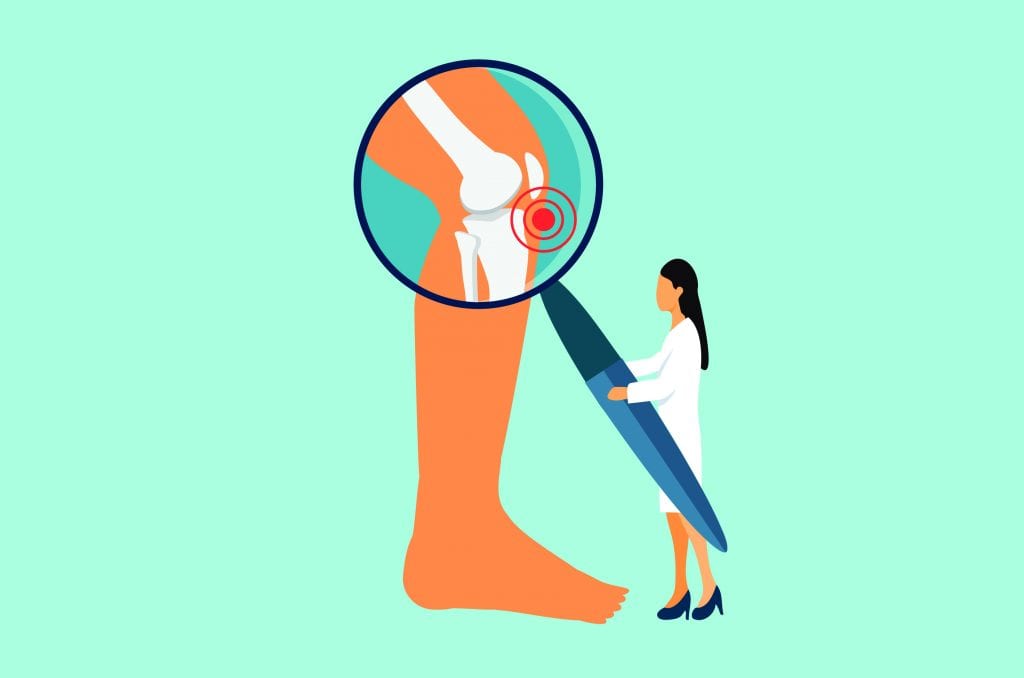The Centers for Disease Control and Prevention estimates that more than 54 million people in the United States suffer from some form of arthritis, accounting for 23% of the adult population. For National Arthritis Awareness month, we’re spotlighting research being done locally to help people cope with the disease. Farshid Guilak, Ph.D., the Mildred B. Simon Professor of Orthopaedic Surgery at Washington University, and his colleagues are working to change how arthritis is treated and bring relief to millions.
While we often think of arthritis as simply wear and tear on the joints, Guilak notes that it is more complicated. “There are actually many different causes, such as age, weight and joint injury,” he says. “It’s difficult to develop drugs to stop the disease’s progress without understanding all of its various pathways.” The most common form of the disease is osteoarthritis, which occurs when the cartilage on the ends of bones wears down. Guilak notes that treatment options are limited. Early stages can be treated with over-the-counter pain relief and anti inflammatory drugs like ibuprofen, but the next step often is joint replacement surgery.
While joint replacements are beneficial, they have a lifespan of 15 years, according to Guilak. After that, a second, more complicated procedure is necessary to remove and replace it, and the risk of failure is higher with a revision implant. With more people undergoing the procedure in their 50s, it further necessitates the development of therapies to bridge pain relief and joint replacement. “Currently, we don’t have any treatments that can prevent cartilage from degenerating,” he says. “We’ve been working on growing living cartilage with the purpose of preserving instead of removing the joint.”
The cartilage is created in a lab from a small number of stem cells and is trained to grow in the shape of the joint. It offers patients a treatment developed from their own cells that doesn’t require whole joint replacement. “We can resurface the cartilage while leaving the existing bone and joint intact,” Guilak says. “This can keep the joint working for another decade.” This year, the technology will go into the first phase of clinical trials in humans. Guilak is optimistic that if testing goes well, the implants could be available for patients within three to five years.
Osteoarthritis is only one form of the disease. Guilak and his colleagues also are developing new ways to treat rheumatoid arthritis, which is caused by inflammation in the joints. Because it affects multiple joints simultaneously, Guilak says it is more difficult to treat surgically. There are drugs that block inflammation, but they have to be regularly injected, and high doses can compromise the immune system. “We are developing stem cell therapies that reprogram cartilage cells to deliver anti-inflammatory drugs when they sense inflammation,” he says. “When the flare up is over, the cells stop producing the drugs, so it prevents the impact on the immune system. It’s part of a whole new generation of ways to treat arthritis.”
